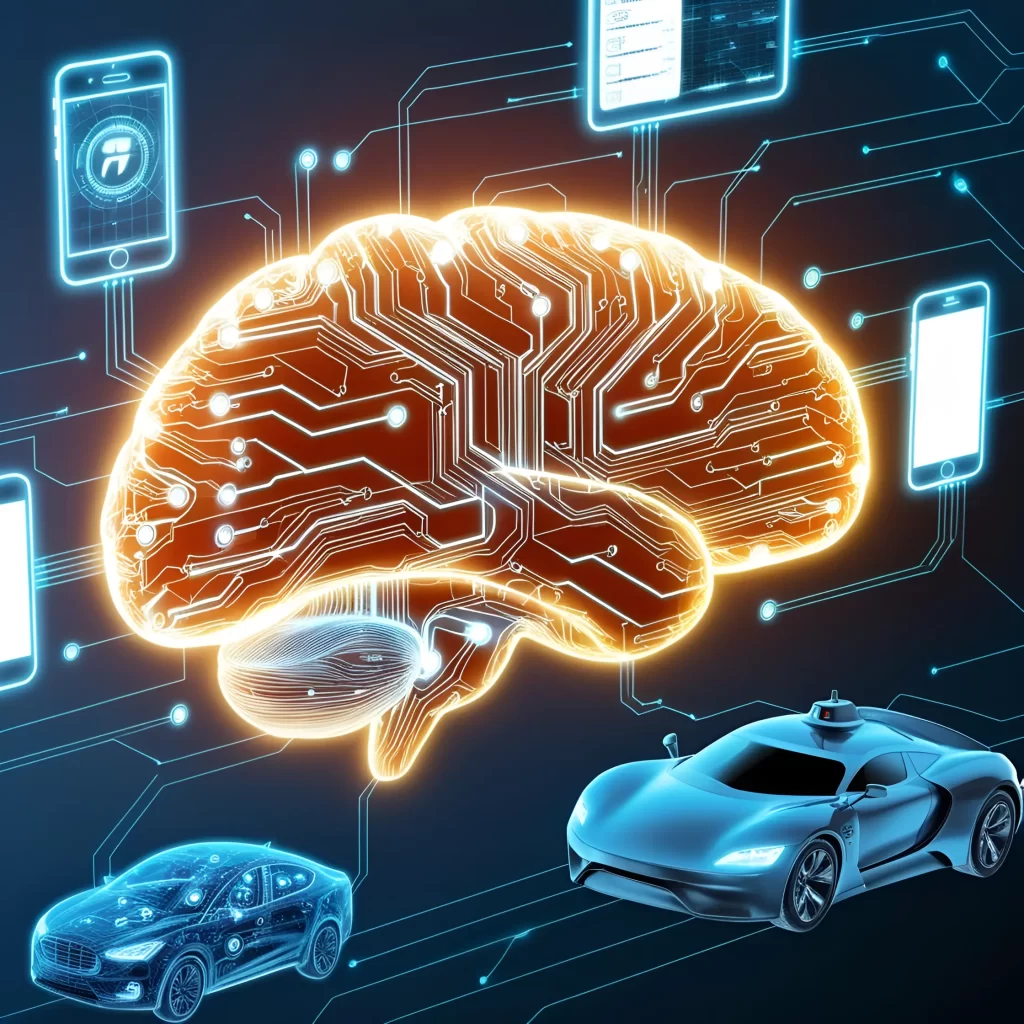Did you know that in just two years, a self-taught AI enthusiast went from zero knowledge to generating over $5 million in revenue by building AI solutions for top companies? That’s the story of Liam Ottley, and he believes you can do it too!
As Artificial Intelligence (AI) evolves at lightning speed, predictions suggest that 50% of jobs could be automated by 2030. Job security concerns are valid. HOWEVER, here’s the good news: 66% of companies are actively seeking talent with AI skills! Mastering AI is your golden ticket not just to survive, but to thrive in this new era. This article will demystify the AI Agent – the next major opportunity available to you, even if you have no coding background.

Why AI Agents Are the Next “Gold Rush”
The rise of AI presents both challenges and unprecedented opportunities. Consider these facts and insights:
- The Future is Automated: Reports from McKinsey and the World Economic Forum (WEF) indicate AI could automate up to 50% of jobs by 2030, with 41% of companies planning workforce reductions due to AI.
- Exploding Demand for AI Skills: Conversely, 50% of employees plan business reorientation, and a massive 66% of companies plan to hire talent with specific AI skills like prompt engineering.
- Supercharged Productivity: AI-literate employees can achieve 5 to 10 times the output of those without these skills.
- Real-World Success Story: Liam Ottley proves that self-learning and building AI solutions (specifically AI Agents) can lead to incredible financial success, generating over $5 million in revenue without a formal AI degree.
- Expert Advice: Naval Ravikant emphasizes: AI isn’t just taking jobs; it’s creating opportunities for those who “brush up on your AI, learn a little bit, watch a few videos, use the AI, tinker with it…”
Clearly, learning to build and apply AI Agents isn’t just an option; it’s an essential and incredibly valuable skill in today’s and tomorrow’s job market.
Decoding AI Agents: What is Your “Digital Employee”?
Imagine an AI Agent as an intelligent “digital worker”. It possesses the ability to:
- Understand the instructions you provide (using natural language).
- Take the necessary actions to complete tasks.
Building and deploying an AI Agent is like “hiring a new employee”: you need to explain the role, grant system access, and build trust. However, AI Agents offer significant advantages:
- Work 24/7 without tiring.
- Can be easily duplicated.
- Cost only a fraction of a human employee to operate.
So, what can AI Agents do specifically?
- 🔍 Search the web for real-time information.
- 📅 Check your calendar and automatically book appointments.
- 📧 Send personalized emails at scale.
- 📊 Update your CRM or Google Sheets with new data.
- 📞 Even handle phone calls and process customer requests!
How AI Agents Work: Inside the Digital Brain
Like humans, an AI Agent typically comprises five core components:
- LLM (The Brain): Large Language Models (like GPT-4, Claude 3) enable the Agent to think, understand tasks, and communicate.
- Prompting (Instructions): How you “teach” the Agent what to do using natural language.
- Memory: The ability to recall past conversations and track task progress.
- External Knowledge: The capacity to access and utilize information from external sources (e.g., company documents, product databases).
- Tools: The ability to interact with and perform actions on other software and applications (calendars, email, CRM, web services…).
The 3 Key “Ingredients” for Building AI Agents (No-Code Focus)
While there are five components, as an AI Agent builder, especially using no-code platforms, you’ll primarily focus on mixing and matching these three core “ingredients”:
- External Knowledge: Providing external data for the Agent to reference or answer questions.
- Tools: Defining the specific actions the Agent can perform.
- Prompting: The “glue” – how you issue instructions, shaping the Agent’s behavior and personality.
The Power of Tools & APIs: Your No-Code Superpower
This might sound a bit technical, but understanding it is like gaining a superpower, especially in the no-code AI world. Remember, Tools allow Agents to act. How? They use APIs (Application Programming Interfaces).
Understanding APIs: The “Waiter” Analogy
Think of an API like a waiter in a restaurant:
- You (Client / AI Agent): Have a request (e.g., “Get latest emails,” “Book an empty calendar slot,” “Add this contact to CRM”).
- API (Waiter): Takes your request to the “kitchen” (Server/Software like Gmail, Google Calendar, HubSpot).
- Kitchen: Prepares the “dish” (Fetches emails, checks availability, saves contact).
- API (Waiter): Brings the “dish” (Email data, available times, save confirmation) back to you.
Every time you browse Instagram, send a Tweet, or watch YouTube, you’re interacting with APIs behind the sleek interface. AI Agents bypass the interface and interact directly with the API. A “Tool” given to an Agent is essentially its ability to make a specific API request.
Two Main API Request Types:
- GET: Fetching information (e.g., checking stock prices, reading calendar availability, getting weather data).
- POST: Sending or changing information (e.g., sending an email, posting a social media update, creating a calendar event, saving data to a spreadsheet).
Types of Tools You Can Use:
- Pre-made Integrations: Many no-code platforms offer ready-to-use tools for popular services (Google Calendar, Gmail, Slack…). Easy to plug and play.
- Custom Tools: You can build your own tools to interact with almost any software that has an API. This offers incredible flexibility and is a skill Liam Ottley emphasizes.
Unlocking Custom Tools: Functions, APIs, and Schemas
Let’s conceptually walk through creating a custom tool, using a simple “Text Capitalizer” example:
- Function: The code (or no-code block) that actually does the work – takes text as input and outputs the capitalized version.
- API Wrapper: You “wrap” this Function in an API. This makes the capitalization functionality accessible over the internet. The API defines how to send text to the Function (input) and how to get the capitalized text back (output).
- Schema (The “Instruction Manual”): This is the magic step for AI Agents. A Schema is a structured description (often in JSON format) telling the Agent everything it needs to know about this API Tool:
- What it does: (e.g., “Capitalizes input text”).
- What input it needs: (e.g., “A string of text called ‘text_to_capitalize'”).
- What output to expect: (e.g., “A string called ‘capitalized_text'”).
When you grant the Agent access to this Tool (by providing its Schema), the Agent’s LLM brain can read the Schema and understand:
- “Okay, this tool capitalizes text.”
- “To use it, I need to provide ‘text_to_capitalize’.”
- “It will return ‘capitalized_text’.”
So, if you tell the Agent, “Please capitalize ‘mary had a little lamb'”, the Agent thinks:
- “User wants text capitalized.”
- “I have a tool described in a schema that ‘Capitalizes input text’.” (Matches intent)
- “The schema says it needs input called ‘text_to_capitalize’.”
- “I’ll extract ‘mary had a little lamb’ from the user’s message and put it in that field.”
- (Agent calls the API with the input).
- (API/Function processes and sends back JSON: {“capitalized_text”: “MARY HAD A LITTLE LAMB”}).
- “I received the raw data. The schema told me the result is in ‘capitalized_text’.”
- “Now I’ll formulate a polite reply.” -> “Sure, here is the capitalized text: MARY HAD A LITTLE LAMB”
The Agent can even ask clarifying questions if the Schema requires multiple inputs and you only provided one! This intelligent, Schema-driven interaction is what makes AI Agents so powerful.
Real-World Business Applications of AI Agents
There are two main types of Agents:
- Conversational Agents: Interact directly with humans via chat (websites, WhatsApp, etc.) or voice.
- Automated Agents: Integrated into workflows, triggered by events (e.g., form submissions).
Focus on Business Applications is Key
While personal AI assistants might be dominated by tech giants, the real opportunity lies in building and selling AI Agents to businesses.
- Co-pilots: Agents designed for specific roles (e.g., Customer Support Co-pilot with knowledge base access, customer info lookup, call summarization tools).
- Lead Generation & Appointment Setting Agents: Engage interested parties on websites, social media, etc., provide instant answers, capture leads, and book appointments using calendar integration tools.
- Research Agents: Automate lead research, gather company and contact information, generate summaries, and qualify leads.
This is YOUR Golden Opportunity!
Whether you’re a business owner looking to optimize operations, an aspiring AI entrepreneur, or a professional aiming to upskill, learning how to build AI Agents is one of the most valuable skills you can acquire today – and the best part is, you don’t necessarily need to know coding to get started.
🚀 The AI revolution is here. Are you ready to seize the opportunity?


